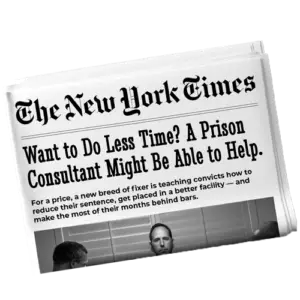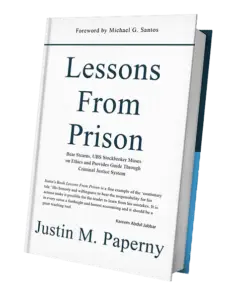When people talk about reentry, they usually mean life after prison. Jobs, family, probation, credit repair. What they rarely mention is this: the record you build now will be reviewed years later by people deciding whether to trust you.
That’s not theory. It’s lived experience.
The Record That Followed Me
When I was in federal prison, I wanted to copy everything Michael Santos did. I followed his blog. He helped me write my first book. But my purpose was different. I wasn’t trying to inspire through miles on a track or reflections on solitary. I wanted to document life inside a minimum-security camp—day by day—to show what accountability and discipline looked like from the inside.
At the time, it didn’t seem like much. I didn’t imagine that 16 years later, people would still be reading that record and deciding whether to work with me or White Collar Advice. Yet that’s exactly what happened.
The record stands. It never goes away.
Reentry Doesn’t End When You Leave Prison
When I got out, I said yes to opportunities most people would ignore. I accepted invitations from the FBI to speak and train agents at Quantico. I wasn’t paid. They covered expenses. That was enough. It was a chance to contribute and prove I could create value even with a felony on my record.
Those unpaid events became part of my reentry plan. Not a plan on paper, but one documented through actions. Every talk, every meeting, every letter of acknowledgment became evidence.
Years later, that record led to something I never expected: an engagement with the U.S. Navy.
They looked at everything. What I wrote in prison, the book I published, the articles, the videos, the talks. They didn’t pretend the felony didn’t exist. They saw the years of work—what I’d done, not what I said I’d do. That’s reentry: proving change through a record no one has to take your word for.
What the Navy Reminded Me
Just recently, I got a message from the Navy saying our engagement was paused because of the government shutdown. Most people might see that as a setback. But I didn’t.
The message reminded me how far accountability travels.
Government applications are thorough. Every line about criminal history has to be disclosed. Yes, I have a felony. Yes, I served time. Yes, I’m a convicted criminal. But when the Navy chose to work with us, it wasn’t despite that record. And it was because they could see a clear record. The years of steady work and accountability that proved I wasn’t the same person who went to prison.
That’s what credible reentry looks like. Not perfection. Not spin. Just a documented pattern of contribution and follow-through.
Why Sitting on the Sidelines Never Works
Some people will always mock or criticize. It’s easier to point from the sidelines than to create. I’ve lived it. People who’ve never written a page or filmed a video will still tell you what you should have done differently.
Ignore them. Not with pride, but with purpose.
Every email you write, every talk you give, every project you start becomes a line in your reentry record. And one day, someone in a government office—or a boardroom—will evaluate that record to decide whether to work with you.
When they do, make sure the record reflects effort, transparency, and persistence.
One Sentence of Advice
Reentry isn’t an event; it’s a record you build daily.
FAQ
Q: What are the most important reentry goals for someone with a federal conviction?
A: Focus on documentation, contribution, and consistency. Keep records of volunteer work, letters, and completed programs. Those materials will one day speak for you.
Q: How do reentry plans help after release?
A: A reentry plan gives structure to your actions. It shows probation, employers, or agencies that you’re intentional about rebuilding credibility—not waiting for sympathy.
Q: What if people won’t look past my conviction?
A: Some won’t. That’s not your problem. Your responsibility is to make sure the record you build can withstand scrutiny from anyone willing to look.
If you’re creating your own reentry plan or don’t know where to begin, join our next webinar or schedule a personal call. We’ll review examples of what credible reentry documentation looks like and how it’s judged by probation officers, employers, and even government agencies.
Justin Paperny



